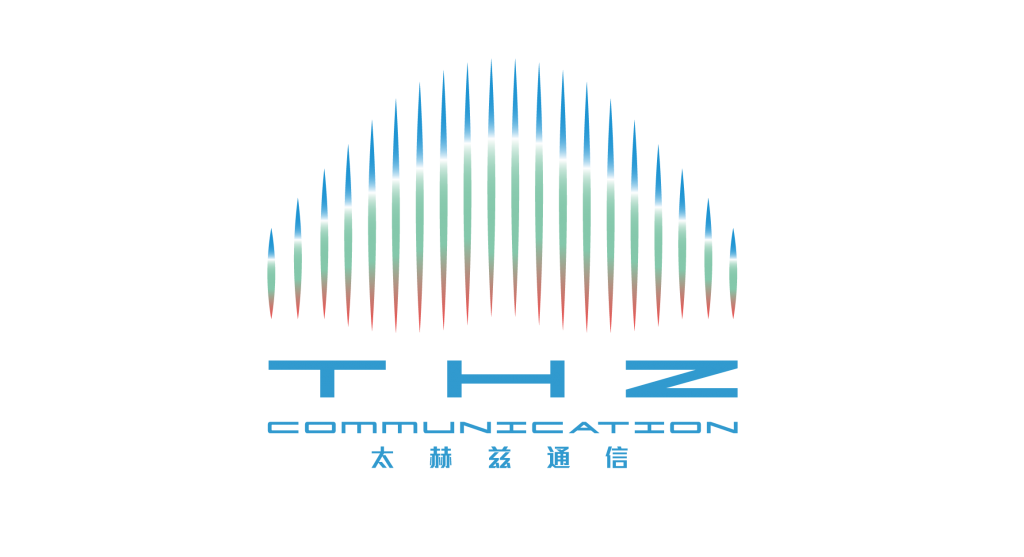| UK | China
|
(time BST, China) 08:00-08:10 (15:00 – 15:10)
Session 1: Opening Ceremony |
|
8:10
8.55 |
15:10
15.55 |
Chair Rosa Letizia (Lancaster University, UK) (Southeast University, Nanjing, China)
Millimeter Wave ICs and Systems for 5G and Beyond Wireless Communications
|
|
9.50 |
16.50
|
|
| 10:15 | 17:15 |
Gain and Radiation Efficiency Enhance Terahertz On-Chip Antenna Based on 0.13-μm SiGe BiCMOS
PRESENTER:
Yuyuan Fan ABSTRACT. This paper proposes a 340GHz on-chip antenna with enhanced gain and radiation efficiency. In the proposed on-chip antenna, a rectangle slot loop is etched in the upper wall of a substrate integrated waveguide (SIW). The SIW structure forms a 1/4 wavelength resonant cavity with the radiator, reflecting electromagnetic waves back to the radiator. Multi-point feeding significantly improves Radiation efficiency. Designed and optimized using a standard 0.13-μm SiGe BiCMOS process and compared with ordinary patch antenna. The simulation results show that both gain and radiation efficiency are improved, the gain is 5.41dBi, and the radiation efficiency is about 49.7% at 340GHz. |
| 10:30 | 17.30 |
A Millimeter-Wave Circulary Polarized Antenna for 5G Applications
PRESENTER:
Xue Ren ABSTRACT. A circularly polarized millimeter-wave antenna for 5G applications based on magnetic dipole radiation is presented. The radiation part is mounted on the ground directly, which is based on the magnetic dipole structure. This arrangement contributes to the robustness of the antenna. Surrounding cavity is utilized to improve the radiation performance. Sequentially fed scheme is applied to generate circularly polarized waves. The simulation results show that the designed antenna works well from 26 to 30 GHz. The radiation patters show low cross-polarization of below -45 dB in boresight with the peak gain of about 8 dBic. The axial-ratio is better than 3.15 dB within the beamwidth of 120o. Besides, good consistence of the radiation patterns on orthogonal planes is also observed. |
| 10:45 | 17:45 |
A W-band Broadband Cassegrain Antenna with Polarisation and OAM Multiplexing
PRESENTER:
Weihao Qi ABSTRACT. A broadband dual-polarisation and three-mode OAM cassegrain antenna in W-band is proposed. The antenna consists of two parts. One is a dual-polarised open-ended square waveguide antenna double-ring antenna array as a feed, which is designed to generate OAM beams with modes of ±1 and +2, and the other is a cassegrain reflector, which is designed to converge the OAM beams. The proposed antenna has a 10dB impendance bandwidth beyond 24.9%, gains better than 26.6dBi, side-lobe levels lower than -10.7dB, and cross-polarisation levels lower than -15dB. |
Session 3B: Broadband Solid state devices
Chair Viktor Krozer (Goethe University of Frankfurt, Germany)
| 09:50 | 16:50 |
Broadband On-Board Impedance Matching Method for Ka-band Amplifier Circuit (Invited)
PRESENTER:
Xiaoning Huang ABSTRACT. In this paper, a method to achieve the broadband on-board impedance matching for Ka-band amplifier circuit based on the trade-off between bandwidth and quality factor (Q-factor) is proposed. As an example, the design procedure of on-board matching networks for low noise amplifier (LNA) is presented in detail. After impedance matching, the simulated small-signal gain S21 of LNA reaches 16.6dB from 36GHz to 44GHz with the maximum S21 of 19.0dB at 36.5GHz. The reflection coefficient S11 and S22 from 36GHz to 44GHz are less than -9.7dB and -11.3dB, respectively. |
| 10:15 | 17:15 |
Design of Broadband Low-Noise Amplifier in 45-nm SOI Technology
PRESENTER:
Guanqin Guo ABSTRACT. This paper presents a 28-38 GHz wideband low- noise amplifier (LNA) with minimum noise figure of 2.8 dB.The amplifier consists of a two-stage cascade design. By using a transformer circuit as its matching network, the LNA achieved a wideband performance. The LNA was designed in 45 nm CMOS SOI technology, achieving a maximum voltage gain of 20 dB and a maximum power gain of 23 dB with a 3dB bandwidth of 28-38 GHz, and a noise figure less than 3.8 dB in the band. At a supply voltage of 1.5V, the DC power consumption was only 20 mW. |
| 10:30 | 17:30 |
Design of 220GHz bandpass filter based on waveguide resonator
PRESENTER:
Tao Zhang ABSTRACT. Based on the theory of classical half-wavelength reactance-coupled filter, a 220GHz bandpass filter based on rectangular waveguide resonator is designed in this paper. The simulation results show that the center frequency of the filter is 220GHz, the relative bandwidth is 5.5%, and the insertion loss is better than 0.041dB and the return loss is better than 20dB in the passband range of 214GHz to 226GHz. |
| 10:45 | 17:45 |
Recent Advance in Adjoint EM Sensitivity Analysis for Fast Frequency Sweep
PRESENTER:
Wei Liu ABSTRACT. This paper reviews the recent advance in adjoint electromagnetic (EM) sensitivity analysis for fast frequency sweep. The existing adjoint EM sensitivity analysis methods have to solve large systems of EM equations repetitively for the entire frequency band. We propose a new adjoint EM sensitivity analysis algorithm for the fast frequency sweep using the matrix Pad´e via Lanczos (MPVL) technique based on the |
Session 3C: Slow wave structures for vacuum electronics devices
Chair Jinjun Feng (Beijing Vacuum Electronics Research Institute (BVERI), China)
| 09:50 | 16:50 |
Design and Fabrication of Self-Assembled Metal Helices for Millimeter-through-THz Traveling Wave Tube Amplifiers (Invited)
PRESENTER:
Francesca Cavallo ABSTRACT. Self-assembly of metal nanomembranes is presented as a viable avenue to fabricate helical slow-wave structures for millimeter-through-THz traveling wave tube amplifiers. The work coordinates three-dimensional simulations of cold helices and one-dimensional models of beam-wave interaction to determine a useful range of design parameters for the slow-wave structures. These parameters include diameter and pitch. Based on the simulation results, prototype helices with microscale diameter and pitch are fabricated. The nanomembrane stiffness and the built-in stress control the geometry of the helices. |
| 10:15 | 17:15 |
Modeling of Self-Winding Helices for Sub-Millimeter Traveling Wave Tube Amplifiers
PRESENTER:
Marcos Martinez ABSTRACT. We present simulations of a travelling wave tube |
| 10:30 | 17:30 |
The Planar Microstrip Slow-Wave Structure for a V-band Dual-Sheet-Beam Traveling-Wave Tube
PRESENTER:
Roman Torgashov ABSTRACT. Planar microstrip slow-wave structure (SWS) consisting of two electrically connected meander lines is under study in this paper. Such SWS is suitable for millimeter-band traveling-wave tube (TWT) operating with two low-voltage sheet electron beams. The use of two beams leads to an increase in the total current while maintaining the current density and therefore leads to an improvement in the output characteristics of the device. |
| 10:45 | 17:45 |
Tolerance Analysis of Double Corrugated Waveguide for D-band TWT
PRESENTER:
Rupa Basu ABSTRACT. D-band TWTs (in the 151 – 174.5 GHz band) are the enabling devices for long range links with high capacity at sub-THz frequency. The EPSRC DLINK project aims to produce a front end to provide about 45 Gb/s for 1 kilometre range in point to point with 99.99% availability in ITU zone K. The design and fabrication of the TWTs is in progress. The short wavelength at D-band needs high precision fabrication and strict tolerances. This paper will discuss the impact of variation of dimensions against the nominal design value of the double corrugated waveguide for a 151 – 161 GHz TWT, highlighting the design parameters that needs higher accuracy. |
Session 4A: Solid state devices
Chair Nuno Borges Carvalho (Universidade de Aveiro, Portugal)
| 11:00 | 18:00 |
Modeling Techniques for GaN FinFET
ABSTRACT. This paper briefly introduces the fabrication of GaN FinFET devices and its DC and microwave characteristics. GaN FinFET exhibits better linearity, higher current density and power density. A large signal equivalent circuit modeling for GaN FinFETs is presented in this paper. The improved Rs and current equation are shown in the paper. The simulation results of DC and S parameter models are compared with the measured ones. The results show that the model has high precision and good convergence and can be used in circuit design. |
| 11:15 | 18:15 |
A Broadband 3 dB Directional Coupler With Ultra-Low Amplitude Imbalance
PRESENTER:
Ming Guan ABSTRACT. This paper presents a broadband 3 dB directional coupler based on a multi-branch hybrid waveguide. By placing a two-stage stepped waveguide-height discontinuity in the middle of the coupler symmetrically, a controllable ripple is introduced to achieve better overall amplitude imbalance. The simulation results show that over the most of the operating frequency bands from 385 GHz to 481 GHz, the amplitude imbalance is less than 0.037dB. The return loss of the operating frequency band is less than -17 dB and the phase imbalance is better than ± 1.85° |
| 11:30 | 18:30 |
Recent advances in space mapping technique modeling GaN HEMT
PRESENTER:
Jinyuan Cui ABSTRACT. Gallium nitride (GaN) HEMT has board application prospect for 5G wireless communication systems. This paper reviews the recent advance in space mapping technique for GaN HEMT modeling technique. A novel decomposed-based space mapping technique is discussed. This method is a systematic modeling approach with fast developing speed. A 2×350 μm GaN HEMT device are used as an example. |
| 11:45 | 18:45 |
The Design of 220GHz Four-way Power Divider Based on E-plane Derectional Waveguide Hybrid
PRESENTER:
Yang Liu ABSTRACT. This paper designs a four-way power divider based on 3dB E-plane waveguide hybrid coupler at center frequency 220GHz.By using bend waveguide cascade the hybrid, the return loss of designed power divider can be better than 21dB over 203GHz -235GHz,while the amplitude imbalance can be less than 0.15dB and relative bandwidth can reach more than 13.6 %. The power divider achieves a good result of equal power distribution and can meet the requirements of terahertz communication and imaging applications. |
Session 4B: Imaging
Chiar Giorgio Savini (UCL, UK)
| 11:00 | 18:00 |
Advanced Image Processing for Rapid Threat Object Identification in Terahertz Images
PRESENTER:
Ashlesha Jagdale ABSTRACT. With an increasing trend of anti-social activities and terrorist attacks, there is a persistent demand for rapid and effective security screening systems, particularly in crowded public places such as in metros stations, airports, etc. Nowadays, terahertz (THz) based rapid scanners and cameras are employed as an alternative to the traditional X-ray baggage scanners due to the ability of THz waves to penetrate most non-metallic materials and low ionizing radiation. Although such rapid THz line scanners and cameras are commercially available, the quality of the THz images acquired with these devices is very poor. This requires advanced image processing techniques to be employed for rapid threat object detection and identification. In this work, a sequence of image processing steps have been adopted which includes (i) Weiner filtering, (ii) Lucy-Richardson deconvolution with the appropriate point-spread function, (iii) histogram based global thresholding of the image. This sequence of image processing operations have resulted in refined images thereby enabling in rapid threat object detection and identification. This approach may be utilized as a preprocessing step before implementing sophisticated neural networks for automatic threat object detection and classification. |
| 11:15 | 18:15 |
Motion Compensation Algorithm Based on Entropy-Minimization for Terahertz SAR
PRESENTER:
Jin Li ABSTRACT. Compared with microwave synthetic aperture radar (SAR), terahertz SAR (THz SAR) is easier to achieve ultrahigh-resolution image but more difficult to compensate motion errors. For the reason that there are more motion errors to be considered in THz SAR, in addition to the low-frequency phase errors (LPEs) in conventional microwave SAR, the high-frequency phase errors (HPEs) caused by tiny high-frequency vibration of the platform must be handled prudently. To compensate all kind of motion errors simultaneously, this paper starts from the defocused image, proposes a non-parametric compensation algorithm based on entropy-minimization, which does not make any hypothesis of the phase error. Newton method is used to implement optimal search of phase error. Finally, the effectiveness of the proposed algorithm is demonstrated by simulation results. |
| 11:30 | 18:30 |
Concealed Object Detection For Active Millimeter Wave Imaging Based CGAN Data Augmentation
PRESENTER:
Lei Fan ABSTRACT. Considering under-controlled privacy issues and no health hazards, the active millimeter wave (AMMW) imaging technique has been widely applied in security industries. The ultimate goal is to recognize and detect the concealed object accurately and fleetly, which requires complete and representative datasets. In this paper, concealed object detection for AMMW is proposed. The conditional generative adversarial network (CGAN) is utilized for data augmentation, which enhances the image feature. Data feasibility for detection is validated by the object detection network. Experimental results demonstrate that the proposed method can improve the recognition accuracy effectively and provide a solution for training with small sample datasets. |
| 11:45 | 18:45 |
Lunar surface radiation brightness temperature simulation for FY-4 lunar calibration
PRESENTER:
Siyuan Zhou ABSTRACT. The Feng Yun-4 satellite (FY-4) is a new generation of meteorological satellite developed independently by China, which will greatly improve the capability of meteorological monitoring and forecasting. Millimeter and Sub-millimeter Sounding/Imager (MMSI) is an important payload it carries. To carry out the lunar calibration of FY-4, the inversion of the main metallic substance content of the lunar surface based on the data from the U.S. Clementine satellite is used to obtain the dielectric constant distribution. Then the lunar surface brightness temperature (TB) radiation model is established by combining the basic lunar regolith parameters. The accuracy and reliability of the method are verified using Chang’e-2(CE-2) MRM data. Finally, the radiation TB distribution of FY-4 MMSI terahertz band in the lunar equatorial region is simulated, which can provide experience for future geostationary satellite satellite-based sounder lunar calibration work. |
Session 4C: Millimetre-wave Traveling Wave Tubes
Chair Yubin Gong (UESTC, China)
| 11:00 | 18:00 |
Simulations of pseudospark discharge and its generated beam to drive a THz EIO
PRESENTER:
Liang Zhang ABSTRACT. Pseudospark (PS) sourced beams have unique features of high-current density and self-focusing by the ion channel. This paper presents the characteristics of the PS-sourced beam from PIC simulations, as well as the potential of the PS-sourced beam for driving a THz extended interaction oscillator (EIO) operating at 350 GHz. |
| 11:15 | 18:15 |
Design Study of a Sub-THz Traveling Wave Tube With a Converging Sheet Electron Beam
PRESENTER:
Nikita Ryskin ABSTRACT. The results of simulation study aimed at development of a sub-THz traveling-wave tube (TWT) with a converged sheet electron beam are presented. The dual grating staggered slow-wave structure with a 100-um-height beam tunnel is designed and its cold electromagnetic parameters are calculated. The results of 3D PIC-simulation of the gain and output power in small-signal and large-signal operating regimes are presented. We compare the characteristics of the TWT driven with the converging sheet beam produced by an electron gun with shielded cathode and with a rectilinear beam produced by a gun immersed in the uniform magnetic field. |
| 11:30 | 18:30 |
Beam-Wave Resynchronization Method of the Non-Periodic Slow-Wave Structure for TWTs
PRESENTER:
Zheng Wen ABSTRACT. A beam-wave resynchronization method of the non-periodic slow-wave structure for TWTs is proposed. The condition of the beam-wave interaction is derived, analyzed and discussed. The non-periodic folded-waveguide SWS (NP FW-SWS) is introduced as an application example. The simulated results show that when the input signal is 0.4 W, the output power of the NP FW-TWT can be improved from 199 W to 233 W, and the corresponding electron efficiency can be increased from 27.6% to 32.4% accordingly. For the NP FW-TWTs, the particle velocity and phase velocity at 94 GHz along the number of elements are also given and compared, which indicates that the beam-wave resynchronization method is beneficial for efficiency enhancement. |
| 11:45 | 18:45 |
Analysis of the Bottom Metal/Dielectric Supporting Plane in Meander Line Slow Wave Structures for Millimetre Wave Traveling Wave Tubes
PRESENTER:
Juan Socuellamos ABSTRACT. Meander lines have been lately studied as slow wave structures (SWSs) for millimetre-wave traveling wave tubes (TWTs) given their numerous benefits such as low beam voltage, high interaction impedance and straightforward manufacture. They are seen as a very promising candidate for a new generation of low-cost TWTs. The efforts are now focused on finding novel meander line configurations that could improve the overall performance of the TWT. This paper analyses the effect of the material underneath the meander line substrate and presents different alternatives to enhance the interaction impedance. |
Extra Open Session for candidates to the Best Student Paper award





